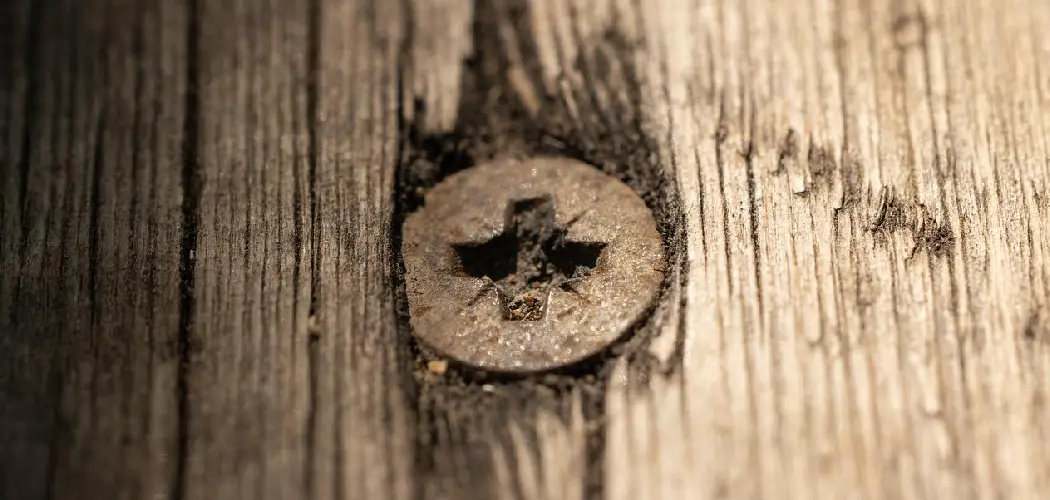Buried nails from wood are a serious problem for many homeowners. They can be difficult to spot and even harder to remove. If you have buried nails in your wood, it is important to take care of them as soon as possible. Here are some tips on how to deal with this problem.
When you’re working on a wood project, nails are often part of the equation. Sometimes, though, you may drive a nail too deep, and it becomes difficult to remove. In this post, we’ll show you how to remove buried nails from wood so you can continue your project with ease.
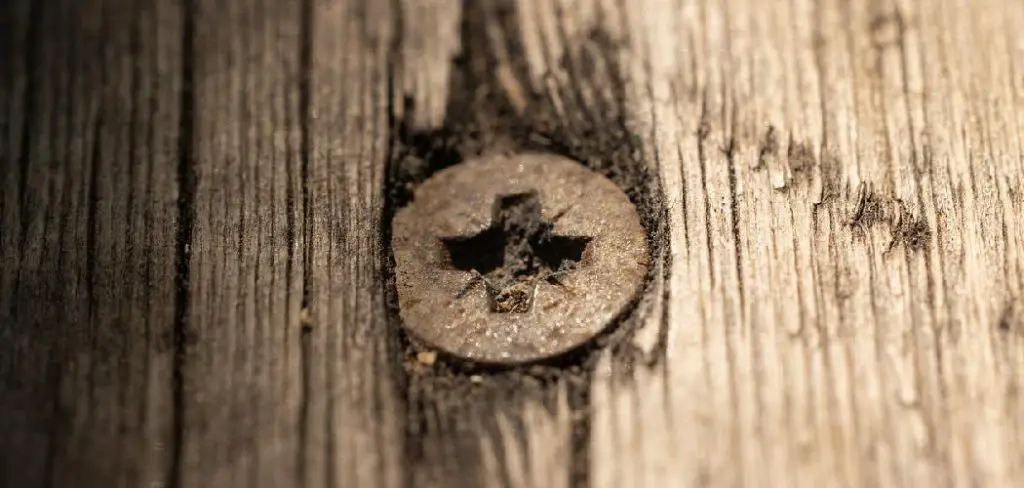
Removing a buried nail from wood can be a difficult task. If the nail is not too deep, you can use a claw hammer to remove it. However, if the nail is too deep, you will need a drill or chisel. In either case, make sure you protect your hands by using gloves and safety goggles. Once the nail is removed, fill the hole with wood putty to repair the damage.
Summary: If you find nails that have been buried in wood, there are a few ways to remove them. You can use a pry bar or a crowbar to remove the nails from the surface of the wood. You can also use a hammer and chisel to remove the nails from the depth of the wood. If you need to remove more than a few nails, it is best to hire a professional.
Tools and Materials:
- Claw hammer
- Drill or chisel
- Wood putty
- Gloves
- Safety goggles
10 Simple Ways on How to Remove Buried Nails From Wood:
1. Use a Claw Hammer:
If the nail is not too deep, you can use a claw hammer to remove it. Simply place the hammer’s claw over the head of the nail and hit the back of the hammer with your hand. The claw will sink into the wood and hopefully grip the nail. Once the nail is secured, pull it out of the wood.
2. Use a Pry Bar:
If the nail is flush with the wood or only slightly recessed, you can use a pry bar to remove it. Place the thin end of the pry bar under the head of the nail and tap it with a hammer to loosen. Once the nail is loose, you can pull it out with your fingers or pliers.
3. Use a Screwdriver:
If the nail is further recessed, you can use a screwdriver to pry it out. Again, be careful not to damage the wood. First, try to get the blade of the screwdriver under the head of the nail. If you can get a good grip, you should be able to pull the nail out. Otherwise, try to wedge the screwdriver’s blade between the wood and the nail. Finally, apply pressure to the screwdriver’s handle to pry the nail out.
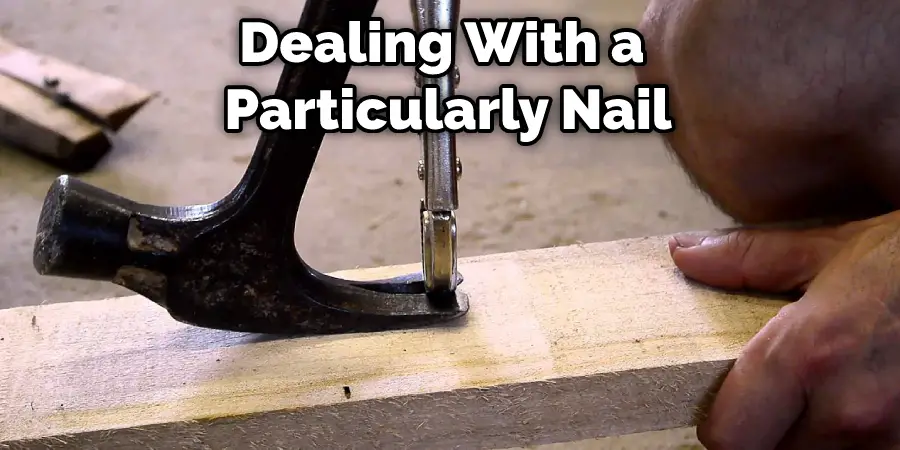
If you’re dealing with a particularly stubborn nail, you may need to use a hammer to help drive the screwdriver under the nail head. If necessary, use a small nail or brad to make a starter hole. Be careful not to damage the wood. Once you’ve gotten the screwdriver under the nail head, you should be able to pull the nail out. Otherwise, try wedging the screwdriver’s blade between the wood and the nail.
4. Use a Nail Puller:
If the nail is too deeply recessed to grip with a screwdriver or pry bar, you will need to use a nail puller. There are two basic types of nail pullers: the cat’s paw and the claw hammer. The cat’s paw nail puller is the best tool for the job, as it has a curved head that fits perfectly around the nail head. Place the head of the tool over the nail head and hit it with a hammer to drive the tool under the nail head. Then, pry up on the tool to pull the nail out.
5. Use a Drill:
If the nail is too deeply recessed to be removed with a nail puller, then you will need to drill a hole next to it. This will give you something to grab onto with the nail puller. Be sure to use a drill bit that is slightly smaller in diameter than the nail. This will ensure that you do not damage the surrounding wood.
Start by drilling a hole next to the nail. Then, insert the nail puller into the hole and use it to extract the nail. Be sure to exercise caution when doing this, as you don’t want to damage the surrounding wood. With the nail removed, you can now fill the hole with putty or a dowel and sand it down to make it flush with the rest of the surface.
6. Use an Impact Driver:
If the nail is extremely deeply recessed, you may need to use an impact driver to remove it. An impact driver is a powerful tool that uses a hammering action to drive screws and nails. This may be the only way to remove extremely deeply buried nails. You can rent an impact driver from most hardware stores.
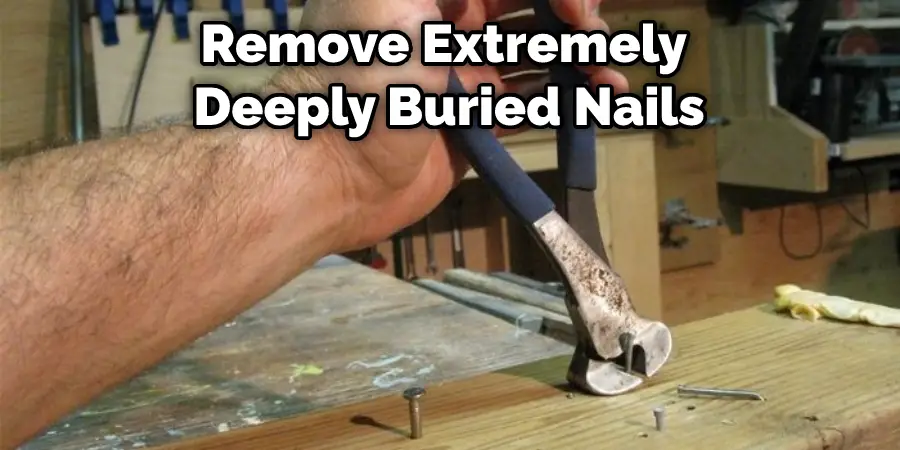
7. Use a Heat Gun:
If the nail is rusted in place, you may need a heat gun to remove it. The heat gun will loosen the rust and make it easier to remove the nail. If the nail is not rusted, you can skip this step.
8. Use a Pliers:
If the nail is flush with the wood or only slightly recessed, you can use a pair of pliers to remove it. Grip the nail with the pliers and pull it out. If the nail is stuck, you may need to wiggle it back and forth a bit to loosen it before pulling it out.
9. Use a Hammer:
If the nail is still not budging, you can use a hammer to tap on the board around the nail gently. This will hopefully loosen the nail so you can pull it out. Be careful not to damage the wood, though!
10. Try a Nail Jack:
If you’ve tried all of the above and the nail still won’t budge, then your last resort is to use a nail jack. A nail jack is a tool you insert into a small hole drilled next to the nail. Then, you turn the tool to apply pressure to the nail, causing it to pop out of the wood. Using a nail jack is a bit more complicated than the other methods, so read the instructions carefully before proceeding. You don’t want to damage your wood by using the tool incorrectly.
You Can Check It Out to Make a Hole in Plywood Without A Drill
How to Prevent Buried Nails From Happening in the Future:
The best way to avoid dealing with buried nails is to prevent them from happening in the first place.
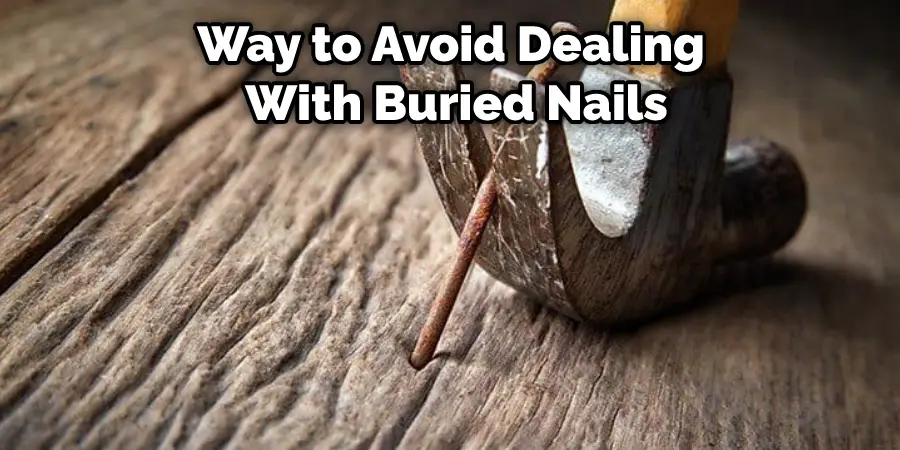
- Inspect your wood before you buy it. Look for any visible nails and avoid purchasing boards that have them.
- If you’re going to be working with reclaimed wood, inspect it thoroughly and remove any nails that you find.
- When nailing boards together, be sure to predrill holes first. This will help to prevent the nails from splitting the wood and becoming buried in the process.
- Always use a hammer to drive nails into wood. Never use a power drill or other powered tool, as this can easily cause the nail to become buried.
- If you do happen to hit a buried nail while working with your wood, stop immediately and assess the situation. Then, remove the nail if possible, using the tips above. If you cannot remove the nail, stop using that wood and dispose of it properly.
Tips and Warnings on How to Remove Buried Nails From Wood:
Tips:
- Be sure to put on gloves to avoid getting injured.
- Use a hammer and a screwdriver to loosen the nail.
- If the nail is too tight, use a pry bar to remove it.
- Be careful not to damage the wood while removing the nails.
- Once the nails are removed, sand the area to smooth it out.
Warnings:
- Do not use a power drill to remove the nails, which can damage the wood.
- Do not try to remove the nails with your bare hands, as this can be dangerous.
- Be careful not to damage the wood while removing the nails.
Frequently Asked Questions
Can You Drill Out Nails?
If the nails are relatively close to the surface of the wood, you may be able to drill them out. This is a good option if the heads of the nails are visible and accessible. Start by drilling a hole in the center of the nail head. Then, use a pry bar or screwdriver to remove the nail. If the nail is stubborn, you may need to use a hammer to tap the pry bar or screwdriver.
Why Do Nails Get Stuck on Wood?
Nails can get stuck in the wood when they are hit too hard. If the nail is not driven all the way into the wood, it can leave a part sticking out. This makes it difficult to remove. To keep nails in position, you should make sure that they are hammered into the wood firmly and securely so that no parts of them are exposed.
When a nail is left exposed, it can be pulled out with pliers. There are several different types of pliers available, and each type has its own advantages and disadvantages. For example, needle-nose pliers have long slender jaws that make them ideal for gripping small items such as nails, while linesman’s pliers have thicker and stronger jaws that make them better suited for gripping larger items.
What Is a Catspaw Tool?
A catspaw is a tool that is used to remove nails from wood. It is also known as a nail puller or nail extractor. The tool consists of a metal bar with a forked end inserted under the nail’s head. The forked end is then levered up, causing the nail to be extracted from the wood. There are two main types of catspaws: those with a solid bar and a hollow bar. The solid bar type is more durable and can be used on thicker nails, while the hollow bar type is less likely to damage the wood.
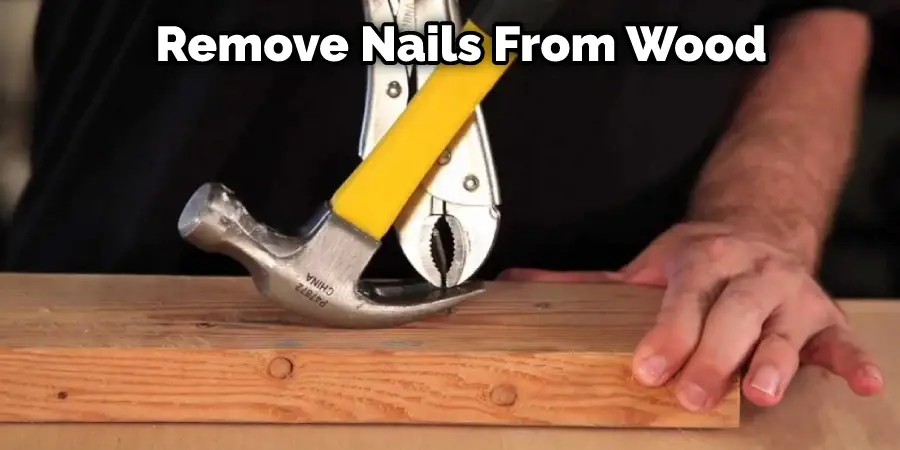
Can You Remove Buried Nails Without Damaging the Wood?
Yes, you can remove buried nails from wood without damaging it. First, use a hammer and a nail set to push the nail head below the surface of the wood. Then use a flathead screwdriver or chisel to carefully pry up any remaining part of the nail above the surface. Finally, use pliers to pull out any remaining pieces of metal in the hole and then fill it with putty or wood glue.
With the proper tools and a steady hand, you can remove buried nails from wood without causing any damage. Be careful when using force to avoid cracking or splitting the wood. If you’re not sure about your technique, consult a professional before attempting the task yourself. Once completed, sand down the area to make it smooth and ready for refinishing.
Conclusion
In conclusion, removing buried nails from wood can be done in several ways. However, each method has its own benefits and drawbacks, so it is important to choose the right method for the job at hand. Hopefully, this article has given you enough information to decide how to remove buried nails from wood for your next woodworking project.
You Can Check It Out to Remove Nail Gun Nails

